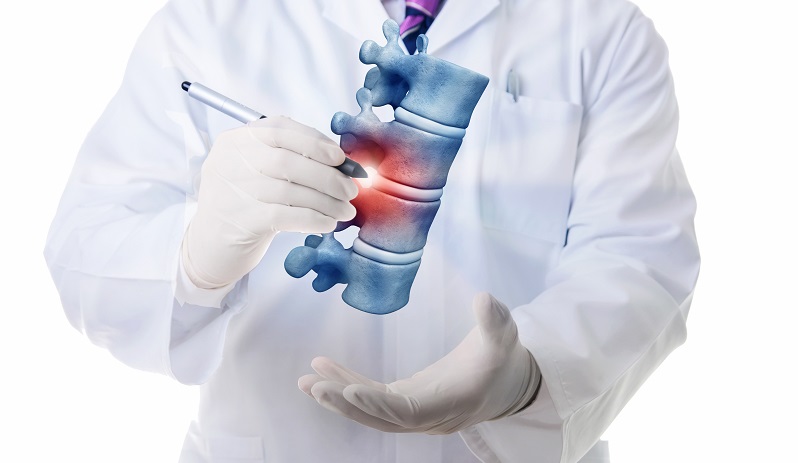Which Spinal Discs Are The Most Commonly Injured?
Category: Spine | Author: Stefano Sinicropi

Your spine is composed of vertebral segments separated by thin, flexible discs. These spinal discs help to provide mobility to the spinal column and aid in how weight is dispersed across your back. However, because of the stress they endure, these discs can break down or become injured. Below, we take a closer look at some of the most common discs that can be injured, and we share some tips for preventing disc injuries in the first place.
Most Commonly Herniated Discs
One of the most common acute injuries involving a spinal disc is a herniation. This occurs when the soft inner portion of the disc breaks through the firmer outer core. As we’ve described on the blog in the past, you can picture your spinal discs like a jelly donut (although they can handle a lot more strain than the donut). If you were to overly compress the donut, the jelly filling would break out. That’s similar to what happens when your spinal discs are compressed, and the gel-like center breaks through the more durable outside layer.
The most common location for this disc herniation to occur is in your lower spine. When we walk, sit, run and jump, most of the stress of these actions is felt in the lumbar region of your spine. Because this area is usually the most stressed day in and day out, these spinal discs are the most prone to degeneration and herniation. The two most common spots for a herniation to occur are between:
- The fourth and fifth lumbar vertebrae (L4 and L5 level).
- The fifth lumbar vertebra and the first sacral vertebra (L5 and S1).
Preventing Disc Injuries
Preventing disc injuries really comes down to working to strengthen your spine and your core without overloading it with stress. It’s impossible to prevent all stress on your spine, and in fact controlled pressure is actually what serves to make your back stronger, so you shouldn’t avoid activity. Healthy activity is important, as is having correct posture.
If you’re in a slouched or hunched position, the stress that is normally dispersed pretty evenly across your spine becomes more concentrated in one area. It’s why you may feel stiff or uncomfortable after a long seated period, especially if you’re not sitting up straight. That’s why we always recommend that you break up long periods of sitting, as this helps to relieve static pressure that is being built up on your spine.
This is especially helpful if you work a desk job, because many people don’t view these sedentary jobs as very taxing on their body. Construction workers and other manual laborers put plenty of strain on their spine, but they are also developing their muscles, so as long they are cognizant of their movement patterns and take steps to protect their spine, their backs may end up healthier than someone who sits all day. Be very aware of your posture throughout the day, and conduct regular posture checks to ensure that you do your part to keep your spine in alignment. If you don’t, there’s a very real possibility that you end up needing to visit Dr. Sinicropi and the team at The Midwest Spine & Brain Institute!
If you end up developing a disc issue or a different back problem, don’t ignore it and hope it goes away on its own. Confront the discomfort head on and work to put it behind you. For any assistance along the way, give Dr. Sinicropi a call today at (651) 430-3800.